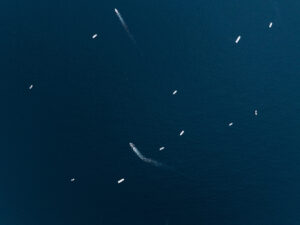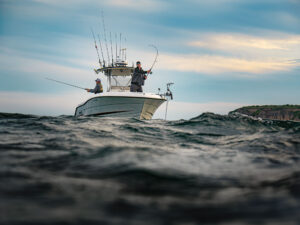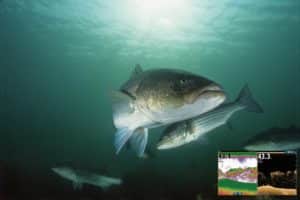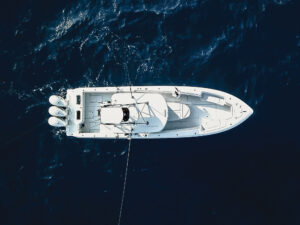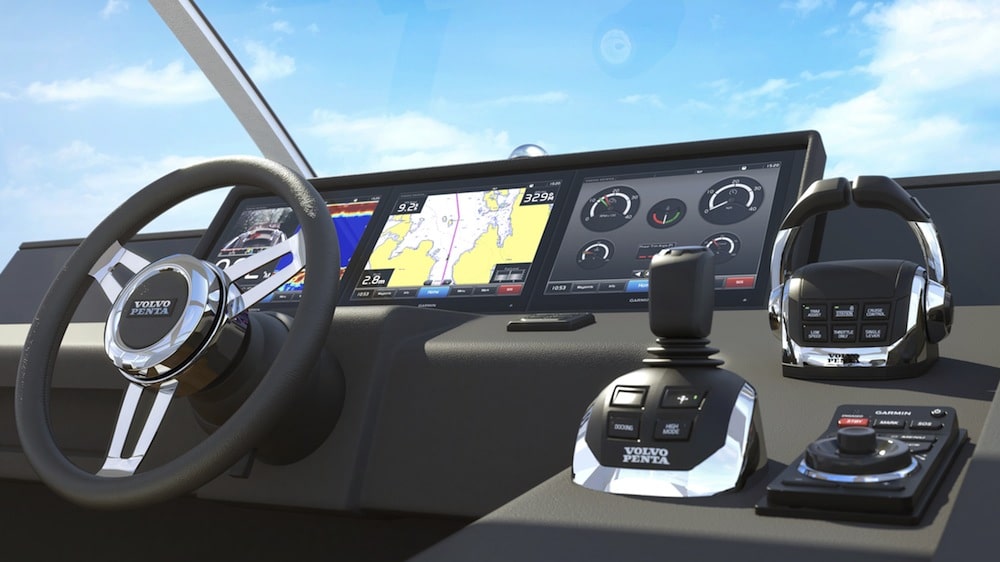
Volvo Penta’s New Glass Cockpit Helm Station
If you’ve been hankering for one of those fancy pod-drive fishing boats you’ve been hearing about, there’s a new trick from Volvo Penta that makes them even more attractive by making boats easier to captain thanks to the integration of Garmin’s intuitive navigation system and Volvo Penta’s joystick controlled IPS system.
They call it the Glass Cockpit. This is not a new term; it was coined years ago to define systems employing multifunction displays (MFDs) in airplane cockpits, which replaced the traditional mind-boggling array of gauges and switches. The Volvo Penta borrowed the term to describe a boat system that networks **Garmin GPSMAP 8000 **MFDs with engine electronics and joystick control systems to make navigation and piloting as easy as twisting a joystick. Yet, how does this benefit saltwater boating anglers?
First, for updates on how well pod drives work on sportifshing boats, check out ****Proving Pods Catch Fish**** and __**Pods: Fad or Future**. Fact is, fishermen have been slow to adopt these propulsions systems, but the momentum seems to have reached a tipping point, and that brings us to Volvo Penta’s Glass Cockpit.
As with airplane cockpits, your helm station no longer needs myriad gauges, each dependent on its own signal and each a capricious as 1955 TV set. Using NMEA 2000 protocol, Garmin and Volvo Penta have not only hardwired the propulsion systems’ into the glass MFD’s, they hardwired the joystick controller to the autopilot as well.
Here’s how it works. When you crank up the power plants, up comes your MFDs. Touch the screen to bring up your engine systems on one screen or practically any fraction of that screen. You can customize them and size them to your preference. Activate the joystick and you activate your autopilot. It begins to navigate your current course. If you want to change that course, simply twist the joystick to the new setting. Here’s the beauty of it: You haven’t suspended navigation, you’ve corrected it. When the autopilot senses your input (i.e. when you quit twisting the stick), it takes the new current course as its new bearing.
Now, if you are following a route, you want to change one leg, twist the stick until you are around the obstacle and then let it go. The autopilot will recalculate your route and get you back on course.
Or, if you want to, take the helm and twist it any way you like. Now you are overriding the autopilot in the old fashioned way. The autopilot will then accept the new bearing as its course. In an emergency maneuver, either the joystick or the helm input eliminates the waste of precious seconds of reaching over to disengage the autopilot before taking the helm.
Just as a navigation tool, the implications are tremendous. But how does it fit into your angling? Say you’re trolling a weedline and it bends away from your course. To snug up to it, twist the joystick toward it until you’re satisfied your baits are as close as they can get without snagging.
Or say, you spot frigate birds working in circles lazily and you know there are mahimahi below them. Twist the joystick toward the birds and the autopilot takes the new course – hopefully to a hookup.
You can resist technology all day long if you want, but remember when GPS came out, the experts said they’d never give up Loran-C. Yet when the GPS technology proved itself more effective, the experts quickly forgot all about Loran.
When you get your hands on a Glass Cockpit-equipped IPS-powered sportfisher, you’re going to forget all about the traditions you fought to cling to. And that is exactly what Volvo Penta and Garmin expect to happen.

